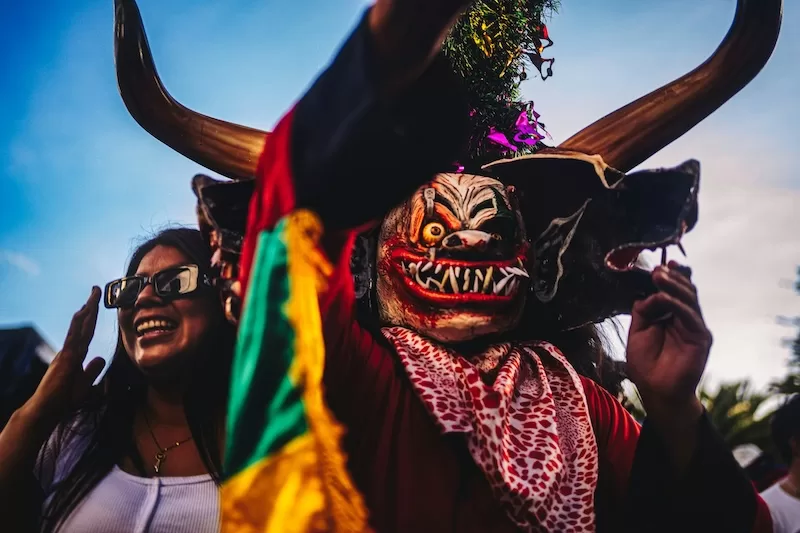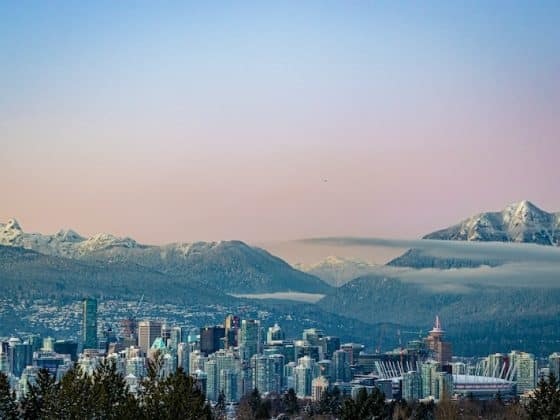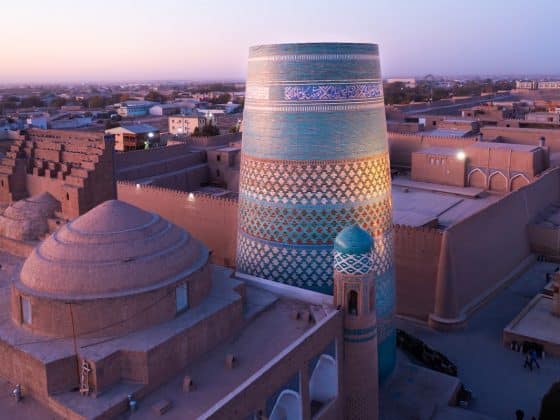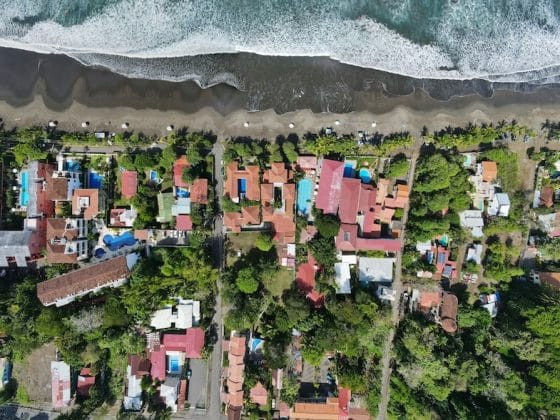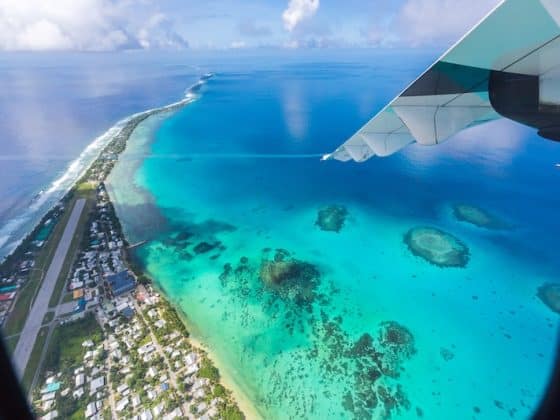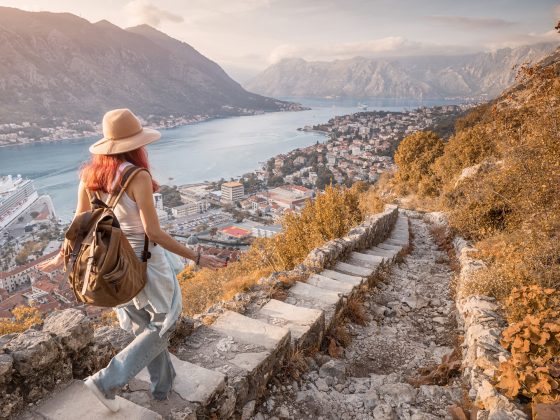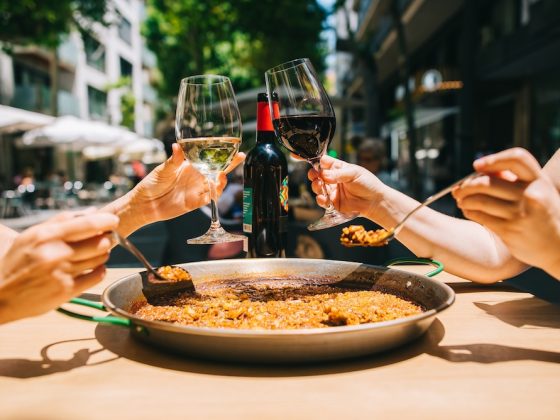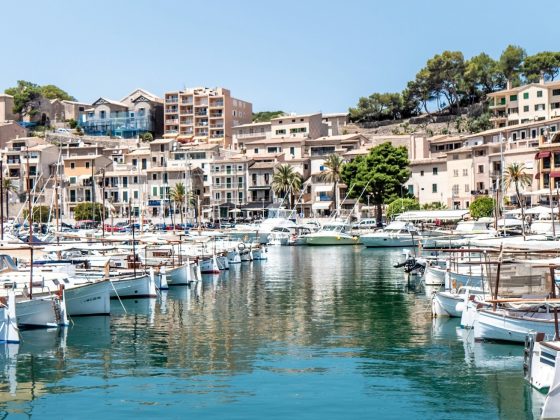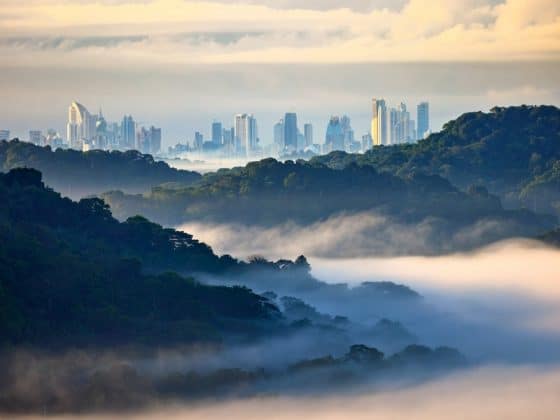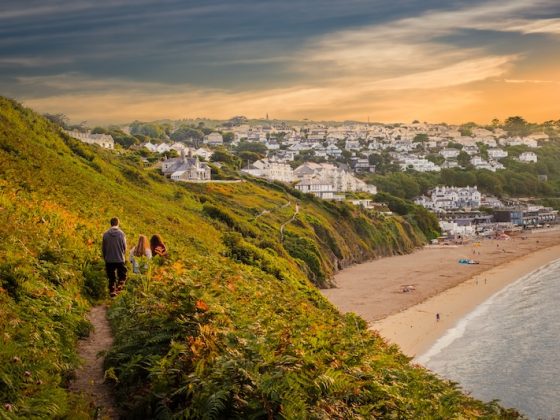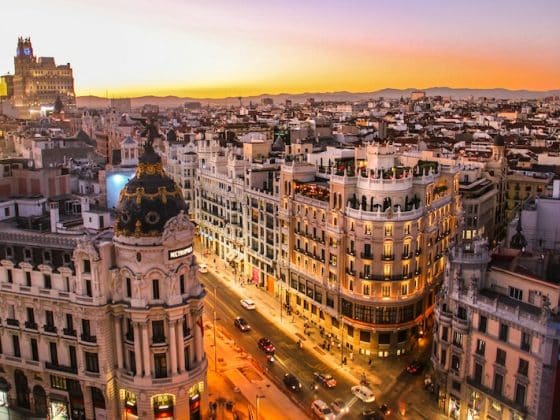Introduction
Culture in Ecuador feels less like a subject to study and more like something that happens around you. It’s the smell of grilled corn on a street corner, the call of a vendor in Kichwa, the sudden burst of brass from a festival parade that wasn’t on any calendar. Ecuador culture is layered: Indigenous, Spanish, African, and modern influences all folded together in one remarkably diverse country.
This guide explores how those layers meet, from Andean markets and Amazon rituals to city life that buzzes with both tradition and progress. Along the way, you’ll find practical insight and a few local secrets for travelers and expats eager to connect more deeply than a quick tour ever allows.
A Multicultural Nation: Ethnic Roots of Ecuador Culture
Mestizo majority and regional diversity
According to the Instituto Nacional de Estadística y Censos, around 77% of Ecuadorians identify as mestizo (a mix of Indigenous and European ancestry) but that label doesn’t really capture the country’s full palette. Ecuador’s true identity lives in the small details: the sound of a Kichwa lullaby sung over a Spanish waltz, the way Andean ponchos share space with coastal marimba drums, or the different words people use for the same cup of coffee depending on where you are.
The mestizaje that defines Ecuador is thousands of local combinations that shift with geography. The highlands (Sierra) trace their rhythm to Indigenous Andean roots: markets filled with handwoven textiles, potato harvests celebrated with music, and communities that move to the steady beat of wooden pipes and percussion. Spanish influence arrived early and fused into mountain tradition rather than replacing it.
The coast (Costa) tells another story. In cities like Guayaquil or Esmeraldas, mestizo identity leans Afro-Ecuadorian, tropical, and lively. Streets come alive with marimba and salsa; seafood sizzles on open grills by the malecón; language itself feels looser, faster, touched by Caribbean cadence.
The Oriente, Ecuador’s Amazon region, is where Indigenous presence still leads daily life and mestizo culture bends toward the forest. Towns like Tena or Puyo feel more like gateways between worlds, one foot in the rainforest, the other in modern Ecuador.
Pro tip: Ecuador’s compact geography means you can experience that entire cultural spectrum in a single weekend. Visit the Otavalo craft market to see Andean artistry in action, spend a night near Cotopaxi Volcano for a taste of highland life, then head down to Mompiche, where fishermen and surfers share beach space and Afro-Ecuadorian rhythms can be heard beckoning you from wooden bars. It’s time-travel through centuries of blended identity.
Indigenous nationalities and languages
The Ecuadorian Constitution officially recognizes 14 Indigenous nationalities and 18 distinct peoples, each with its own territory, language, and worldview. They stretch from the snow-covered Andes to the dense green of the Amazon basin, forming what the government calls a plurinational state.
In the highlands, the Kichwa people make up the largest group, their language a branch of Quechua that spread long before the Inca Empire rose. Towns like Otavalo, Guamote, and Saraguro are known not only for their colorful textiles and market life but for how traditions endure in daily life: sunrise rituals, communal work known as minga, and music that accompanies the agricultural calendar.
Travel east, and the language shifts with the landscape. The Shuar, Achuar, and Waorani peoples of the Amazon speak languages from entirely different families, oral traditions passed through generations, each one holding ecological knowledge, myth, and medicine that outsiders have only begun to understand. A Shuar healer might refer to the forest as a “living pharmacy,” a belief now echoed by ethnobotanists studying the region’s biodiversity.
Many indigenous people live in small agricultural or forest communities, where Spanish and Kichwa intertwine in everyday speech. In Andean markets like Saquisilí or Guamote, bilingual signs are common, and bartering is still a functioning system of trust.
Some younger Ecuadorians move easily between two or even three languages. You’ll hear Kichwa terms like alli puncha (good morning) woven into Spanish conversations or see school murals that teach both alphabets side by side. It’s part of a revival movement across the Andes: one that treats language not as an artifact, but as a map back to community.
Fun fact: Ecuador’s constitution lists Kichwa and Shuar as official languages for intercultural relations, giving them legal recognition alongside Spanish. It’s one of the clearest signs of how the country’s Indigenous identity isn’t secondary to its national story; it is the national story.
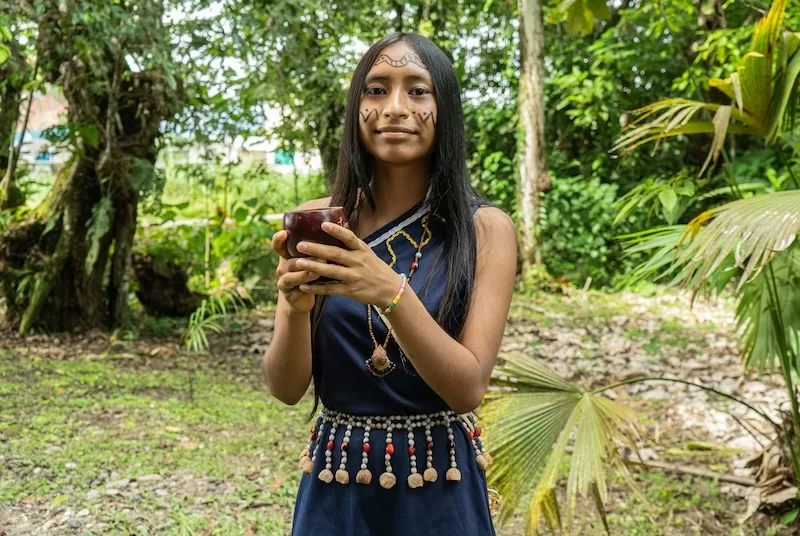
African and Montubio influences
The Afro-Ecuadorian population, concentrated in Esmeraldas and parts of Imbabura and Carchi, descends largely from enslaved Africans who arrived in the 16th and 17th centuries, as well as from shipwreck survivors who founded free settlements along the Río Santiago and Río Onzole. Their culture blossomed in relative isolation, shaping its own proud identity long before independence.
Music became both expression and endurance. The bomba, played with drums, guitars, and maracas, pulses through festivals and gatherings. Its fast, syncopated, and joyous, a sound born from resilience and now recognized as part of Ecuador’s national heritage. During La Marimba celebrations in Esmeraldas, the energy is electric: dancing feet, wooden instruments, and call-and-response songs that blur the line between ritual and party.
Cuisine tells the same story. Coastal dishes like encocado de pescado (fish cooked in coconut sauce), bolón de verde (mashed plantain balls with cheese or pork), and cazuela de mariscos (seafood stew) trace the African and tropical ingredients that define life near the Pacific.
The Montubios are Ecuador’s rural coastal mestizo communities. Recognized officially as a distinct cultural group, they blend Indigenous, Spanish, and African influences into something entirely their own. The Montubio lifestyle revolves around horseback work, farming, and rodeo competitions known as rodeo montubio, where lasso skills and folk songs meet under a blazing coastal sun.
Their culture thrives in small towns across Manabí, Los Ríos, and Guayas, marked by storytelling, humor, and hospitality. If you stay in a Montubio village, you might be invited to share aguardiente (sugarcane liquor) and dance to amorfino, a witty improvisational verse-trade that feels like poetry slam with a country vibe.
Fun fact: The Montubio people were officially recognized as a separate ethnic group in Ecuador’s 2008 Constitution, a nod to their deep cultural roots and contribution to national identity.
Language, Religion and Family Life
Spanish and indigenous languages
Spanish shapes most of daily life in Ecuador, yet what you hear changes as quickly as the scenery outside the bus window. In the highlands, Spanish rolls slower, more formal, laced with courtesy and softened consonants that mirror the calm pace of mountain towns. On the coast, the same tongue speeds up, colored by slang and laughter, stretched by heat and salt air.
There are also the voices that predate Spanish entirely. Kichwa and Shuar remain vibrant in their home regions, spoken in markets, homes, and community meetings. In Otavalo, it is common to hear two languages in one conversation, and in Amazon towns like Puyo or Macas, radio stations still broadcast in Indigenous tongues. These languages carry ideas Spanish doesn’t easily hold, words for landscapes, plants, and relationships that have no exact translation.
You hear them most clearly in the early hours of market days, when vendors greet one another in Kichwa before switching back to Spanish for the crowd. For locals, bilingualism isn’t an academic choice. It’s simply how life sounds.
Fun fact: Ecuador’s 2008 Constitution officially recognizes Kichwa and Shuar as languages “for intercultural relations,” giving them equal respect alongside Spanish. It’s a symbolic shift, but one that puts ancestral languages at the heart of the modern nation.
Catholicism, syncretism and spiritual traditions
Roman Catholicism arrived with the Spanish conquest in the 1500s, but the faith that took root here grew hybrid roots. Catholic saints share altars with Andean deities, and many festivals blend mass with ritual, rosaries with drumbeats.
During Inti Raymi, the Andean Festival of the Sun, offerings to Pacha Mama, or Mother Earth, often sit beside images of the Virgen de El Quinche. In the Amazon, Indigenous communities still honor forest spirits while attending Sunday service. They live side by side. That balance has lasted for centuries.
Visit Cuenca or Loja during Holy Week and you’ll see what that blend looks like: candlelit processions winding through cobblestone streets, barefoot pilgrims, and brass bands echoing against colonial walls. The devotion feels both ancient and entirely Ecuadorian.
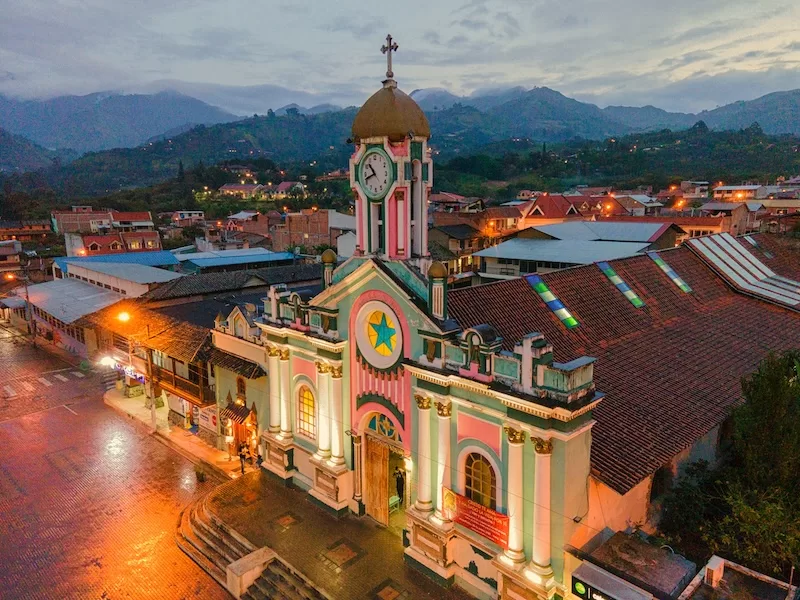
Family in Ecuador isn’t a single household. It’s a constellation. Parents, grandparents, cousins, and godparents all orbit one another through a web of visits, favors, and shared meals. Weekends mean almuerzo familiar, long lunches that stretch into the afternoon, where conversation lingers and no one looks at the clock.
Neighbors often blur into family. In small towns, a forgotten ingredient sends you knocking next door without hesitation, and community celebrations can turn a quiet street into a collective dining room.
If you’re new to Ecuador, expect warmth. Invitations come easily, and declining food or drink is considered impolite, sometimes even puzzling. Accepting is part of belonging, and belonging grows from saying yes.
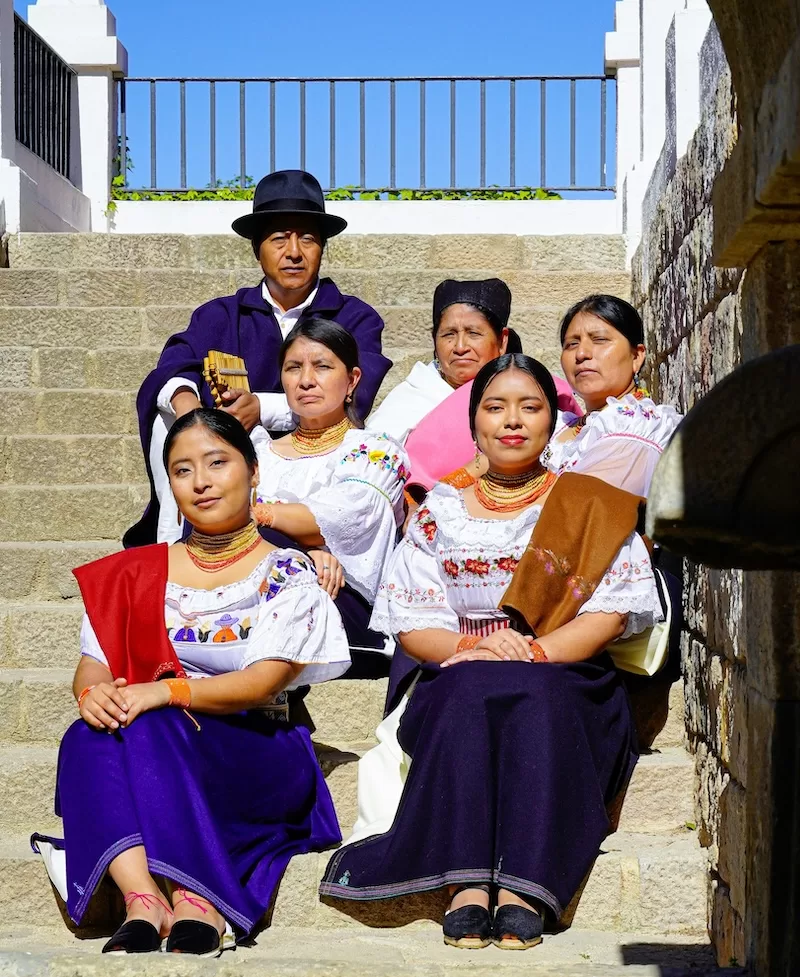
Traditions, Celebrations and Festivities
If there is one thing Ecuador does better than most, it is celebration. The calendar barely pauses between festivals, and each one carries a distinct mix of joy, devotion, and history.
Major national festivals
In February or March, Carnival explodes across the country with foam, water, and street laughter. Quito and Ambato turn into open-air theaters, while in smaller towns like Guaranda, parades wind past balconies draped with bunting and speakers blasting Sanjuanito rhythms. The foam fights that seem chaotic at first are part of the fun. Ask anyone and they’ll tell you, “Carnaval sin espuma no es Carnaval.”
Come June, the Inti Raymi, or Festival of the Sun, lights up the Andes. It predates the Inca and celebrates the harvest cycle, now wrapped in both Indigenous and Catholic meaning. Villages like Otavalo, Cotacachi, and Peguche fill with dancers wearing feathered hats and embroidered vests, circling plazas to the sound of pan flutes and drums. Offerings of corn, fruit, and chicha (fermented maize drink) honor Pacha Mama, the Earth Mother, in rituals that have survived centuries of change.
By December, attention turns to the Fiestas de Quito, a full week of festivitiesmarking the capital’s founding. Streets close to traffic, music spills from balconies, and chivas (open buses painted in bright colors) roll through the city with bands onboard and people singing along. It is part civic pride, part street carnival, and completely Quito.
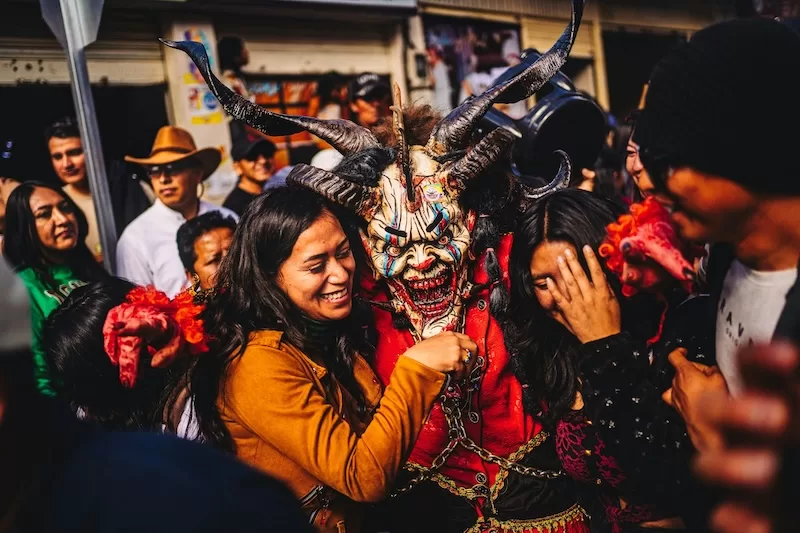
Regional traditions (Sierra vs. Coast vs. Amazon)
Ecuador’s celebrations shift with its landscapes. Across the Sierra, ancient Andean rites often merge with Catholic traditions. Festivals might begin with a priest’s blessing but end with Indigenous dances honoring the sun or the harvest. Communities gather for mingas, collective workdays that turn labor into social festivity, complete with shared meals and music.
Along the Coast, Afro-Ecuadorian and Montubio influences take over. The drums of Esmeraldas, the marimba, and the pulsing bomba turn Carnival into a sensory experience. Parades here feel like living concerts, with dancers in bright fabrics moving to beats that came across the Atlantic centuries ago and have since become fully Ecuadorian.
In the Amazon, celebration is more elemental. Indigenous communities hold rites guided by lunar cycles, planting seasons, and river flow. Songs in Shuar and Kichwa echo through forest clearings, accompanied by flutes made from bamboo and seeds that rattle like rain. Many rituals are private, shared only with those invited, but some festivals, like the Chonta Palm Festival in Puyo, open their doors to outsiders with food, dance, and storytelling that link nature and spirit in ways that modernity hasn’t erased.
Each region has a distinct pace. One traveler’s Ecuador might be a blur of street music and fireworks, while another’s might be a quiet night in the jungle listening to a ceremony that feels older than time itself. That contrast is what makes Ecuador culture so endlessly fascinating: one country, many calendars, and celebrations that speak every language of joy.
Cuisine and Everyday Food Culture
If culture is memory made edible, Ecuador’s cuisine might be its most eloquent storyteller. The country’s small size hides an astonishing variety of flavors, shaped by altitude, ancestry, and abundance. Move from the coast to the Andes to the Amazon, and the menu changes completely.
Coastal, Andean, and Amazonian flavors
Along the shoreline, seafood is naturally king and coconut is the crown. In Esmeraldas or Manta, mornings begin with shrimp ceviche served in plastic cups at market stalls, topped with red onion, tomato, and lime so sharp it almost sings. Locals swear by encebollado, a steaming fish soup eaten for breakfast and believed to cure anything from hangovers to heartbreak. Encocado de pescado, fish simmered in coconut milk with coriander, carries the Afro-Ecuadorian influence that defines the region’s cooking.
Climb into the Andes, and the flavors shift with altitude. Potatoes replace plantains, and corn shows up in every form imaginable. The air smells of roasted pork and ají, the ubiquitous chili sauce that ranges from gentle to tear-inducing. Try hornado (slow-roasted pork served with hominy and fried plantains), locro de papa (a rich potato soup with avocado and cheese), or llapingachos (griddled potato cakes stuffed with cheese). These dishes are comfort food for cold mornings, built on ingredients that have sustained Andean life for millennia.
Across the rainforest region, the forest becomes the pantry. Meals revolve around cassava, river fish, and plantains, prepared simply but with freshness city restaurants rarely match. One traditional dish, maito, wraps fish in bijao leaves and grills it over an open flame. Locals often pair it with chicha, a fermented drink made from yuca, and share it communally, a custom that turns every meal into ceremony.
Each region cooks with what the land gives, and together they tell a story of geography meeting history. You could spend a lifetime eating your way through Ecuador and still find new dishes tied to specific valleys, rivers, or festivals.
Market life and meals
Markets are cultural hubs. Early mornings mean stacked fruit, steaming empanadas, and vendors who insist you taste before you buy. Step into Otavalo’s Saturday market, Quito’s Mercado Central, or Cuenca’s 10 de Agosto Market, and your senses have no time to rest. Fruit stalls spill over with guava, granadilla, and tree tomatoes. Smoke rises from grills loaded with corn and skewered meat.
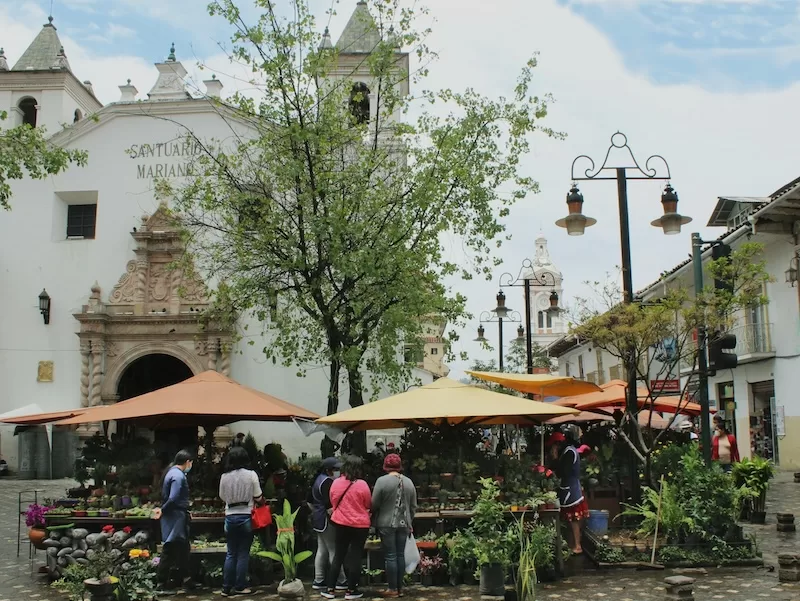
Women in embroidered blouses pour fresh juice into plastic cups, and somewhere in the background, someone is always bargaining with a smile. Vendors call out greetings, children dart between stalls, and lunch counters serve steaming plates of rice, beans, and fried egg for a couple of dollars.
In homes, almuerzo is the centerpiece meal, not dinner. It starts with a bowl of soup, followed by a main dish and fruit juice, and often ends with conversation rather than dessert. Dinner is light and late, sometimes just coffee, bread, and cheese.
Modern takes on tradition
Across cities like Quito, Cuenca, and Guayaquil, a new generation of chefs is reclaiming local ingredients once dismissed as “humble.” Restaurants are turning cassava, cacao, and Andean grains into high-end dishes that still feel rooted in place. A tasting menu might feature cuy (guinea pig), a traditional highland protein, plated with fine-dining precision but the same earthy flavor locals grew up with.
Coffee culture, too, has evolved. Ecuador produces some of the best arabica beans in the world, especially from Loja and Manabí, and boutique cafés now celebrate that fact. A flat white in Quito isn’t imported culture; it’s a local story retold with a modern accent.
Pro tip: Skip hotel buffets. Eat where the queues are longest, especially around lunchtime. The people who know best are the ones eating next to you, not the ones on TripAdvisor.
A culture that eats together
More than anything, Ecuadorian food culture is about sharing. A single plate can feed two, and strangers often become friends before dessert. It’s normal to offer a bite of what you’re eating or pour a little extra coffee for whoever just joined the table. In rural areas, refusing food can seem almost rude, not because of manners but because it breaks the invisible thread of community.
To taste Ecuador properly, you have to slow down. Meals here aren’t filler between plans. They are the plan. Ecuador culture values the table as much as the food.
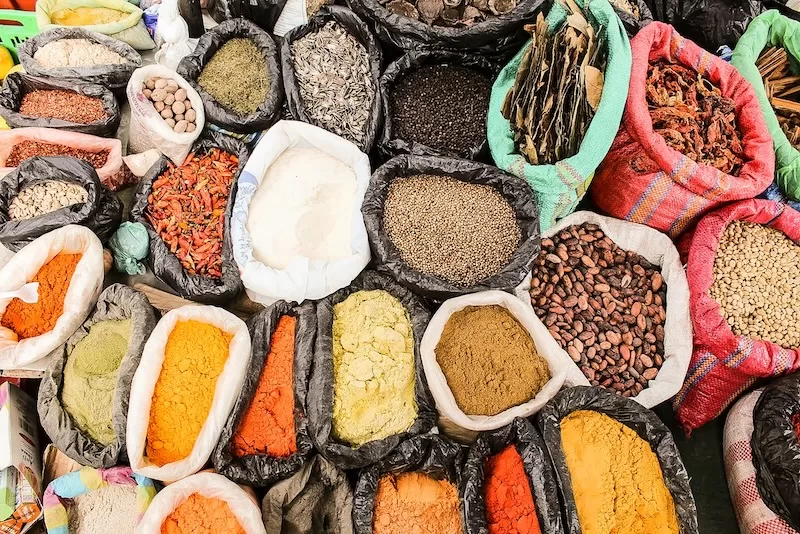
Read More Like This: 6 Reasons You Should Move to Ecuador
Art, Music and Craftsmanship
In Ecuador, art isn’t confined to galleries. It lives on the walls of markets, in the joy of festivals, and in the hands of people who still create with the same patience their grandparents had.
Traditional music genres and dance
Music is one of Ecuador’s most visible expressions of identity. Every region has its own sound, and together they form a national playlist that shifts with the landscape.
In the Andes, the pasillo reigns. Often called Ecuador’s “musical soul,” this slow, nostalgic guitar style emerged in the 19th century, blending European waltz structure with Andean melancholy. Its lyrics speak of love, distance, and the mountains themselves. Walk through Cuenca on a Sunday afternoon, and you might hear it spilling from a radio or performed live in a plaza by older musicians whose fingers still remember every note.
The Sanjuanito, bright and rhythmic, was born from Indigenous highland celebrations. Its circular dances symbolize unity and the cycles of harvest and renewal. Schools teach it as part of national pride, but it remains at its best during village festivals, when entire communities join the dance without waiting for a cue.
On the coast, music moves faster and louder. The Afro-Ecuadorian bomba of northern Esmeraldas is percussive, energetic, and deeply communal. Drums, guitars, and maracas set the pace while singers call and respond, often improvising lyrics that weave humor, history, and resistance into one beat. It’s music that makes stillness impossible.
Further inland, in Guayaquil, salsa and cumbia dominate street corners, while in the Amazon, flutes made from bamboo and seeds echo through jungle ceremonies. These sounds tie people to their landscapes, each note carrying memory and belonging.
Fun fact: The Afro-Ecuadorian marimba tradition of Esmeraldas was inscribed on the UNESCO Intangible Cultural Heritage List in 2015, recognized for preserving one of the most vibrant musical legacies in Latin America.
Indigenous crafts and local artistry
Visual art in Ecuador often begins with the land itself. In Tigua, a small Andean village near Cotopaxi, artists paint on wood panels using natural pigments and vivid color. Their work, known as Tigua painting, captures daily life: farmers plowing, women spinning yarn, children running beneath volcanoes. It’s folk art and autobiography, a way of documenting life at altitude.
In Otavalo, Saraguro, and Guamote, textile traditions still flourish. Handwoven shawls, ponchos, and belts display intricate geometric patterns whose meanings trace back generations. The craft isn’t static; young weavers blend ancestral designs with contemporary palettes, selling their work both in markets and online, turning heritage into livelihood.
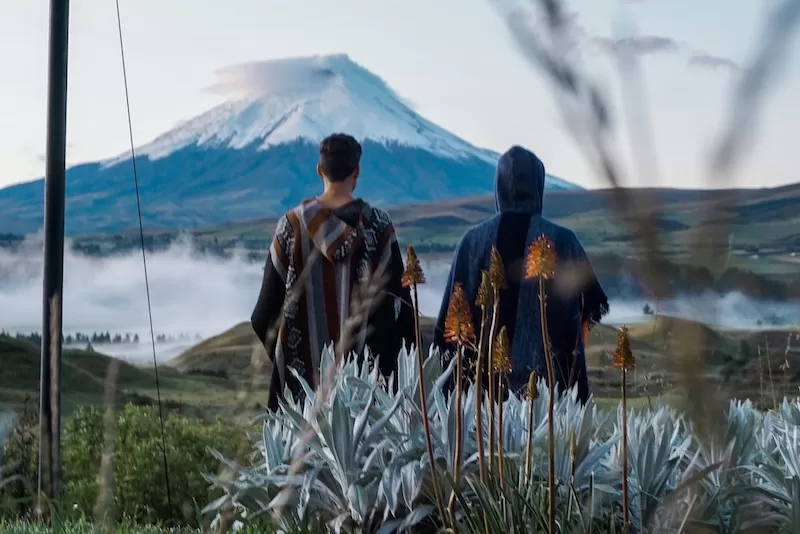
The toquilla straw hat is popular around the world, but strangely better known as the “Panama hat.” Despite the name, it originated in coastal Ecuador, particularly in Montecristi and Cuenca. Woven from the fine fibers of the toquilla palm, the best examples can take months to complete and are so finely made they can pass through a wedding ring. UNESCO recognized the craft in 2012 as Intangible Cultural Heritage, securing its place as one of the country’s proudest exports.
Pro tip: If you’re shopping for a hat, ask where it was woven, not just where it was finished. True Montecristi weaves have up to 2,000 strands per square inch and feel almost like silk.
Contemporary creativity
Modern Ecuadorian art stands comfortably beside its traditions. Around Quito’s La Floresta district, murals stretch across entire buildings, mixing Andean symbols with pop surrealism. The city’s galleries showcase work that merges pre-Columbian motifs with modern abstraction, and street art often carries political and environmental messages that mirror the country’s own balance between tradition and progress.
In Cuenca, you’ll find craft cooperatives reinventing ceramics and jewelry with eco-friendly materials, and in Guayaquil, the emerging music scene blends Latin beats with digital production, creating a sound that feels as global as it does local.
Modern Life, Urban Culture and Global Influences
Urban centers and creative scene
Cities like Quito, Cuenca, and Guayaquil are where Ecuador’s reinvention is most visible. In Quito’s La Floresta, murals climb entire buildings, craft beer flows from converted garages, and the city’s artists gather at open-air screenings under string lights. It’s a neighborhood that feels like a dialogue between old and new: cobblestone lanes meet startup studios, and the colonial skyline shares the horizon with glass towers.
Cuenca, often called Ecuador’s cultural capital, balances cosmopolitan energy with small-city warmth. Its UNESCO-listed historic center brims with colonial architecture, yet the local art scene is distinctly contemporary. Galleries host collectives experimenting with recycled materials and digital installations. Cafés double as artist studios. You can spend a morning touring the city’s 16th-century churches, then end the day at a jazz bar along the Tomebamba River.
Guayaquil, Ecuador’s largest city and commercial hub, has a faster pace. The Malecón 2000 waterfront project transformed a once-rundown stretch of riverbank into a promenade of gardens, museums, and restaurants. A new generation of chefs, designers, and musicians is rewriting the city’s reputation from industrial port to creative powerhouse.
Even smaller towns like Loja and Baños have found their niche. Loja, long known for its musicians, has become a magnet for digital nomads seeking mountain views and reliable Wi-Fi. Baños mixes adrenaline tourism with wellness retreats, where yoga studios overlook waterfalls and locals sell guayusa tea for energy before dawn hikes.
Tourism, globalization and cultural change
Tourism is both an opportunity and a tightrope for Ecuador. The country’s landscapes (volcanoes, rainforests, and beaches) draw millions each year, but culture is the thread that keeps visitors returning. In Otavalo, Indigenous artisans who once sold only to neighbors now sell globally through cooperatives that ensure fair trade. In the Amazon, community-run ecolodges have turned cultural preservation into sustainable business, letting visitors learn directly from Indigenous guides while funding forest protection.
Still, the line between preservation and performance can blur. Some villages now re-stage rituals for tourists that were once private. The challenge lies in balance: keeping culture alive without turning it into a show. Many communities are meeting that challenge head-on, reclaiming control over how their stories are told.
For travelers, awareness is the difference between impact and intrusion. Ask before photographing people or ceremonies. Buy directly from artisans rather than middlemen. And when you attend a festival, participate as a guest, not a spectator. Ecuador’s living culture thrives best when it’s respected as something shared, not consumed.
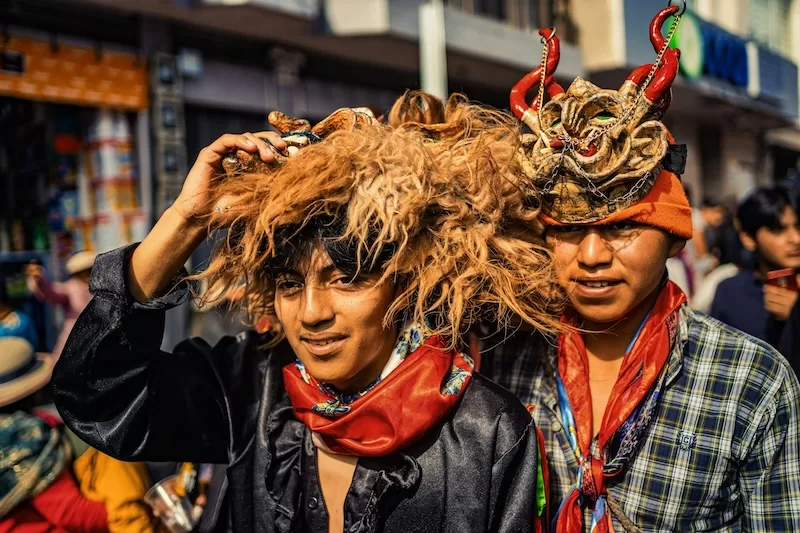
A connected generation
Younger Ecuadorians, particularly in cities, move easily between tradition and global influence. They stream K-pop and Latin trap but still join family almuerzos every Sunday. They post TikToks from colonial plazas, drink oat milk lattes, and wear sneakers embroidered with Kichwa designs. It’s a cultural bilingualism that feels natural rather than curated.
Education and technology have brought new energy to old crafts. Indigenous and Afro-Ecuadorian entrepreneurs are using social media to sell handmade goods directly to buyers abroad, turning local artistry into global commerce. Universities now teach courses on ancestral agriculture and climate resilience alongside robotics and design. Ecuador is redefining what progress looks like on its own terms.
Pro tip: To see this blend firsthand, visit Casa de la Cultura Ecuatoriana in Quito. The museum’s exhibits mix pre-Columbian artifacts with modern installations, showing that the line between ancient and contemporary is a collaboration rather than a divide.
Read More Like This: Top 10 Cities in Ecuador to Visit and Live In
Why Ecuador Culture Matters to Visitors and Expats
Culture in Ecuador isn’t background noise. It’s the structure of daily life, the manual that tells you when to eat, how to greet, and when to stop talking just to listen. For visitors and expats, learning that structure transforms the country from a place you visit to a place you understand.
How to engage respectfully and meaningfully
The easiest way to connect in Ecuador is to show curiosity. Locals appreciate effort more than fluency, so a simple “buenos días” or “gracias, vecina” opens doors faster than perfect grammar. Ask about local foods, comment on the view, help carry something heavy… it’s all part of the social glue.
In rural areas, community workdays, known as mingas, are common. Neighbors gather to clean roads, plant trees, or repair irrigation channels, then share a meal when the work is done. For newcomers, joining a minga goes above volunteering. It becomes a doorway into true Ecuadorian life.
In cities, culture may show itself differently but shares the same spirit. Join an open-air concert in Quito, wander through Cuenca’s Sunday art markets, or take a cooking class that starts with a trip to a local market. Each experience offers small clues about how Ecuadorians balance tradition and modernity, faith and joy, work and togetherness.
Pro tip: Keep a small notebook or photo journal during your stay. Write down the names of dishes you liked, the songs you heard, or the stories people told you. You’ll realize how quickly the country starts to speak back through those memories.
Practical tips for travelers and long-term visitors
- Learn the language, at least a little. Even ten words of Kichwa or a polite “muchas gracias” earn smiles. In Indigenous regions, effort is seen as respect.
- Eat locally. Choose comedores populares (family-run eateries) over international chains. The food is cheaper, better, and full of stories.
- Buy directly from artisans. Markets like Otavalo or Saraguro are lifelines for families who keep traditional crafts alive.
- Show patience. Things move slower here. Appointments start late, buses stop unannounced, and rain sometimes decides your schedule. Locals take it as life, not inconvenience.
- Respect spiritual spaces. Churches, shrines, and Indigenous ceremonies deserve considerate attention, not photos from afar. When in doubt, ask.
If you stay long enough, these gestures turn into habits. You’ll start greeting your neighbors, bargaining in markets, and talking about “our” volcanoes or “our” beach. That shift from guest to participant is how belonging begins.
FAQs
Q1: What is the dominant religion in Ecuador?
Most Ecuadorians are Roman Catholic, but many Indigenous communities blend ancient beliefs with Catholic practices.
Q2: What languages are spoken in Ecuador?
Spanish is by far the most widely spoken language; several Indigenous languages such as Kichwa and Shuar are also in use, especially in rural zones.
Q3: What distinguishes coastal culture from highland culture in Ecuador?
Coastal culture tends to emphasize seafood, Afro-Ecuadorian beats and warmer-climate traditions; highland culture features Andean crops (potatoes, corn), winding mountain rituals and Indigenous heritage.
Q4: What are the main traditional festivals in Ecuador?
Major celebrations include Carnival, Inti Raymi (Festival of the Sun), and the Fiestas de Quito in December. Many towns also honor local patron saints with processions that blend Catholic and Indigenous rituals.
Q5: Are Indigenous traditions still alive in Ecuador?
Yes. Even though urbanization and globalization have had impact, many Indigenous peoples maintain cultural practices, languages and festivals.
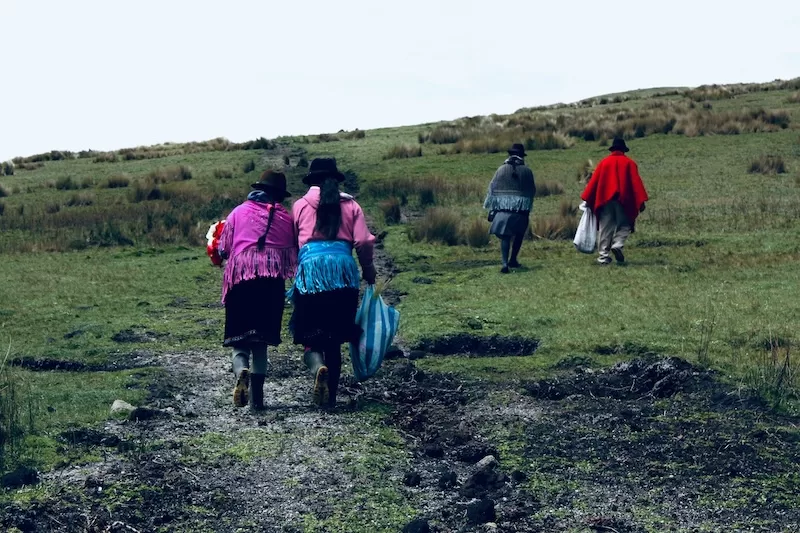
Q6: How can a visitor engage respectfully with Ecuadorian culture?
By learning a few local phrases, supporting local artisans, asking permission for photos, and showing genuine interest in family, neighborhoods and tradition rather than just taking photos.
Q7: What food is Ecuador known for?
Ceviche, locro de papa (potato soup with cheese and avocado), hornado, and plantain-based dishes on the coast.
Q8: How do Ecuadorians typically greet one another?
Greetings are warm and personal. A handshake is common in formal settings; among friends and family, a single kiss on the cheek is the norm. Greetings are always accompanied by a verbal “good morning” or “good afternoon.” Skipping it can come off as distant.
Q9: How do Ecuadorians view foreigners?
Warmly, especially those who show curiosity and respect. In both big cities and small towns, people are eager to share stories, recipes, or travel tips. The key is humility: arrive as a learner, not an expert, and Ecuador will open its doors.
Culture You Feel Rather Than Visit
To understand Ecuador is to listen. To its languages, to its festivals, to the silence between mountain winds and coastal waves. Culture here isn’t a performance for visitors. It’s a daily act of remembering through cooking, music, storytelling, and community.
Travelers often come for the landscapes: the volcanoes, the jungles, the islands that defy imagination. But what stays with them isn’t the scenery. It’s the people. The laughter echoing from a market stall, the patient rhythm of a pasillo in a Cuenca café, the way a stranger insists you take another helping of soup because “you’ve come a long way.”
For expats, learning Ecuador’s culture means unlearning hurry. It means realizing that time stretches differently when life revolves around family tables, village squares, and festivals that stop traffic just to dance.
If this article has deepened your curiosity, take the next step. Subscribe to our newsletter for more in-depth insights for those considering life abroad in Latin America.
Contact Author
"*" indicates required fields
Stay Ahead on Every Adventure!
Stay updated with the World News on Escape Artist. Get all the travel news, international destinations, expat living, moving abroad, Lifestyle Tips, and digital nomad opportunities. Your next journey starts here—don’t miss a moment! Subscribe Now!
